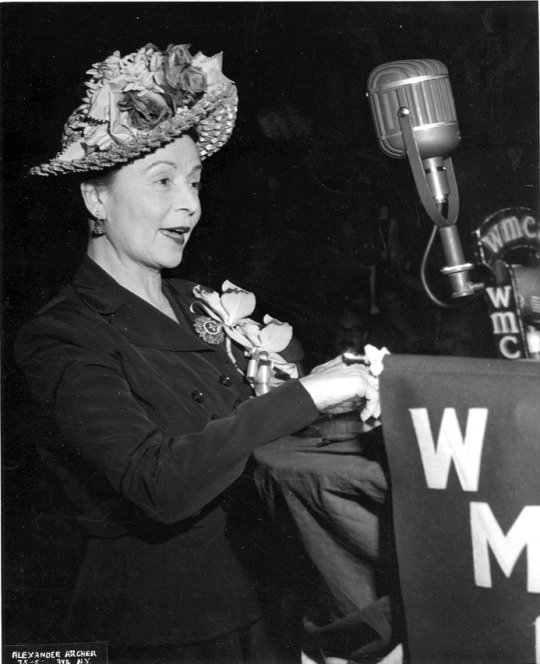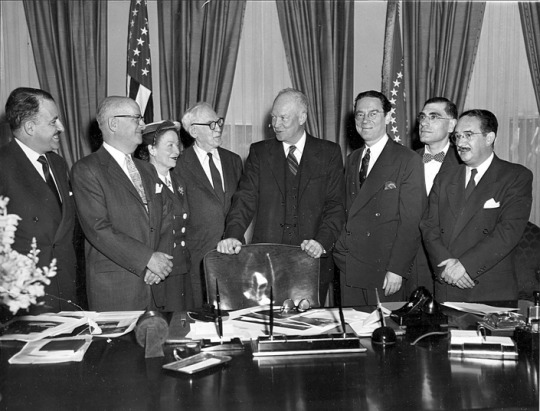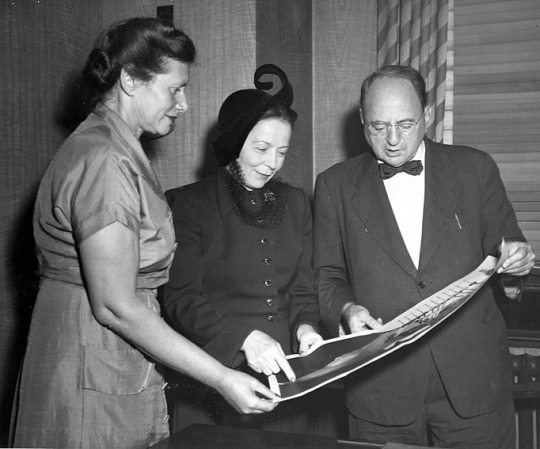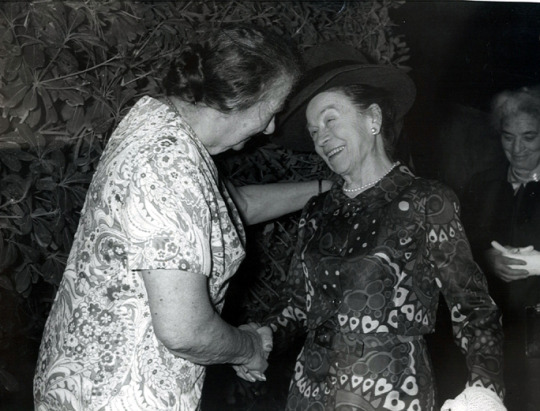#Out of the Archives
By Andrey Filimonov
"Rose Halprin’s joie de vivre was reflected in
her love of the arts and of people. The resplendence and distinctiveness of her
hats was proverbial, but beneath that varied headgear was a Yiddisher kop—a
brilliant, analytical Jewish mind—together with a warm and sensitive Jewish
heart.“ – Rabbi Israel Goldstein

Rose Halprin in 1948; Hadassah Archives on Long-term Deposit at
the American Jewish Historical Society, I-578, RG 18—Photographs; Box
173; Folder 6; American Jewish Historical Society, New York, NY.
In the pantheon of former Hadassah
leaders few women stand out more than Rose Luria Halprin—a two-term national
president of Hadassah, a woman of many talents, speaker of several languages, a
friend to many national leaders and a foe to the enemies of Eretz Yisrael. The
list of her accomplishments is truly awe-inspiring. During her terms as
Hadassah president, she opened the hospital complex on Mount Scopus in 1939,
established the Hebrew University–Hadassah Medical School, and broke ground for
the new Hospital at Ein Karem in 1952. As a member of the American Section of
the Jewish Agency, she argued before the United Nations for the Partition Plan
of 1947 and raised millions to absorb the influx of new immigrants entering
Israel in 1950s and 1960s. Despite her humble origins, she wielded immense
political power with the establishment in the US and in Israel at a time when
women were seldom seen in leadership positions.

Rose Halprin in a meeting with President Harry S. Truman, circa
late 1940s. Hadassah Archives on Long-term Deposit at the American Jewish
Historical Society, I-578, RG 18—Photographs; Box 173; Folder 4; American Jewish Historical
Society, New York, NY
The extensive photo collection in the Hadassah Archives on Long-term Deposit at the American Jewish
Historical Society, I-578 features photographs of Halprin—engaged in discussion with
President Eisenhower, exchanging pleasantries with President Truman, sneering
at David Ben-Gurion, shaking hands with Golda Meir and taking tea with Shimon
Peres. Many photos show her addressing almost exclusively male audiences. The
vast majority of her photographs, taken over the decades, share one distinct
feature—in nearly all of them, Rose Halprin is seen wearing an elaborately
fashionable hat. In fact, she wears a different hat in every photo. She wears
hats of various fashions and styles, shapes and colors, from classically chic
to mildly bizarre. Indeed, Rose Halprin’s hats collection, rumored to
have numbered in the hundreds, is the stuff of legends and anecdotes.

Rose Halprin in a meeting with President Dwight D. Eisenhower,
circa early 1950s. Hadassah Archives on Long-term Deposit at the American
Jewish Historical Society, I-578, RG 18—Photographs; Box 173; Folder 4; American Jewish Historical Society, New York, NY
Menachem Begin famously said to
Halprin: "When the British put a price on my head, you were deciding which
hat to put on yours.” The Prime Minister of Israel may have been misled by
Halprin’s glamour, audacity and impeccable composure, but the documents found
in RG 13—Executive Functions Records in the
Hadassah Archives reveal that she was
never one to dodge bullets or limit her leadership functions to cocktail
parties with politicians and celebrities. In fact, her remarkable achievements
and life-long attachment to principles came with a heavy price of hard and
often dangerous work.

Rose Halprin mapping new projects, undated. Hadassah Archives on
Long-term Deposit at the American Jewish Historical Society, I-578, RG
18—Photographs; Box 173; Folder 4; American Jewish Historical Society, New York, NY
After her first term as national
president of Hadassah, she moved to Palestine to serve as a liaison to the
Hadassah Medical Organization, in the midst of anti-Jewish riots by Arabs in
Hebron and other areas. She came ready to help the victims of violence and to
courageously and staunchly advocate for cooperation between Jews and Arabs. She
traveled to Berlin in 1935 and 1938 on Youth Aliyah missions to rescue Jewish
children from the tightening deadly grip of the Nazi regime. As the second-term
national president of Hadassah, she faced the horror of the Hadassah medical
convoy massacre and was there to set up five temporary hospital locations after
the Mount Scopus complex had to be evacuated.
In October of 1972, a direct attempt on
her life was made by the militants of the Palestine Liberation Organization,
who mailed a letter bomb to her apartment in New York City. Fortunately, the
bomb failed to detonate.

Rose Halprin with Prime Minister of Israel Golda Meir, undated.
Hadassah Archives on Long-term Deposit at the American Jewish Historical
Society, I-578, RG 18—Photographs; Box 173; Folder 4; American Jewish Historical
Society, New York, NY
The PLO was not the only organization
that viewed Halprin as an enemy. In 1973, the Central Studio for Documentary
Film in Moscow, USSR produced a documentary film titled “The Hidden and the
Obvious: The Goals and the Deeds of Zionism”—a work of anti-Zionist propaganda
with vehemently anti-Semitic rhetoric and visuals not unlike those of the Völkischer
Beobachter. A sequence of the film presented by the narrator as an
illustration of the “sinister Zionists infiltrating the American government”
prominently featured an image of Rose Halprin meeting Dwight Eisenhower. She is
sporting an elegant beige hat with a short veil, adorned with a long pheasant
feather.

Rose Halprin in a meeting with Prime Minister of Israel David
Ben-Gurion (seated to her right), circa early 1960s. Hadassah Archives on
Long-term Deposit at the American Jewish Historical Society, I-578, RG
18—Photographs; Box 173; Folder 4; American Jewish Historical Society, New York, NY
Halprin’s deeds are reflected in the
vast photograph collection and many other record groups in the Hadassah
Archives, which can be accessed in the reading room at the Center for Jewish
History.
From 2015-2016, Center archivists processed the
Hadassah Archives on Long-Term Deposit at the American Jewish Historical
Society (AJHS) thanks to the generous support of the Leon Levy Foundation. The
Hadassah Archives measures over 1,500 linear feet and is one of the most
frequently used collections at AJHS.
Andrey Filimonov is an Archivist at the Center
for Jewish History.

